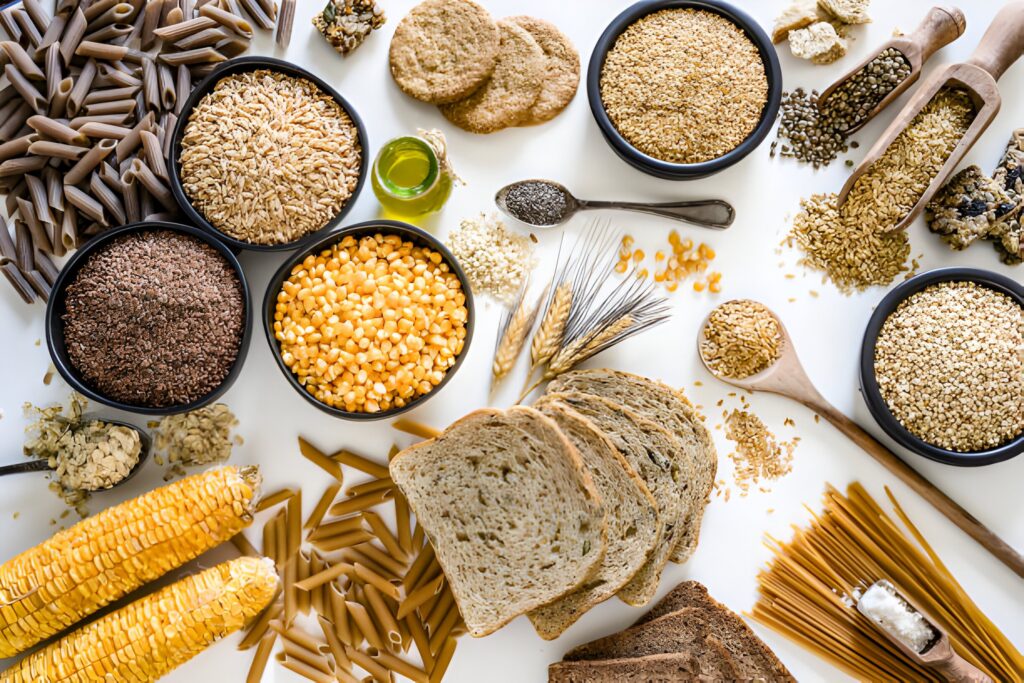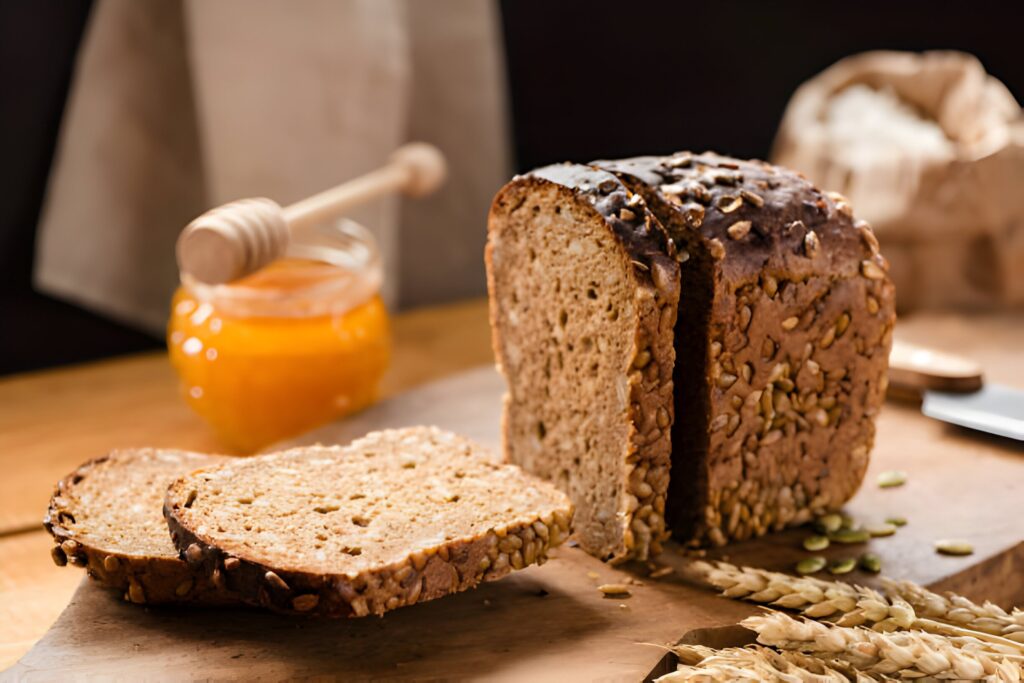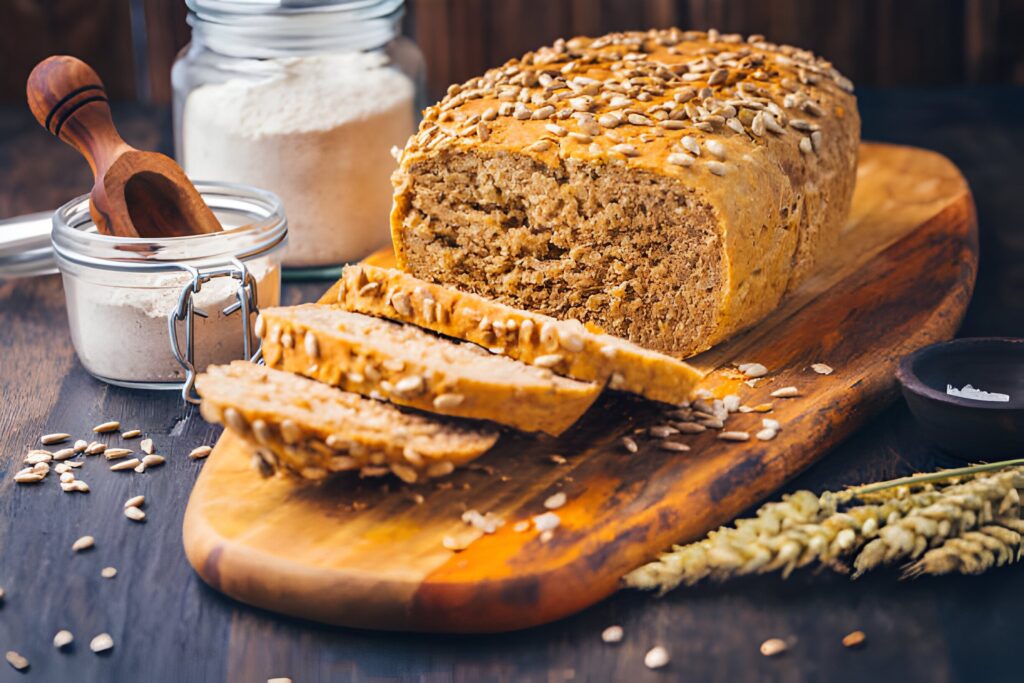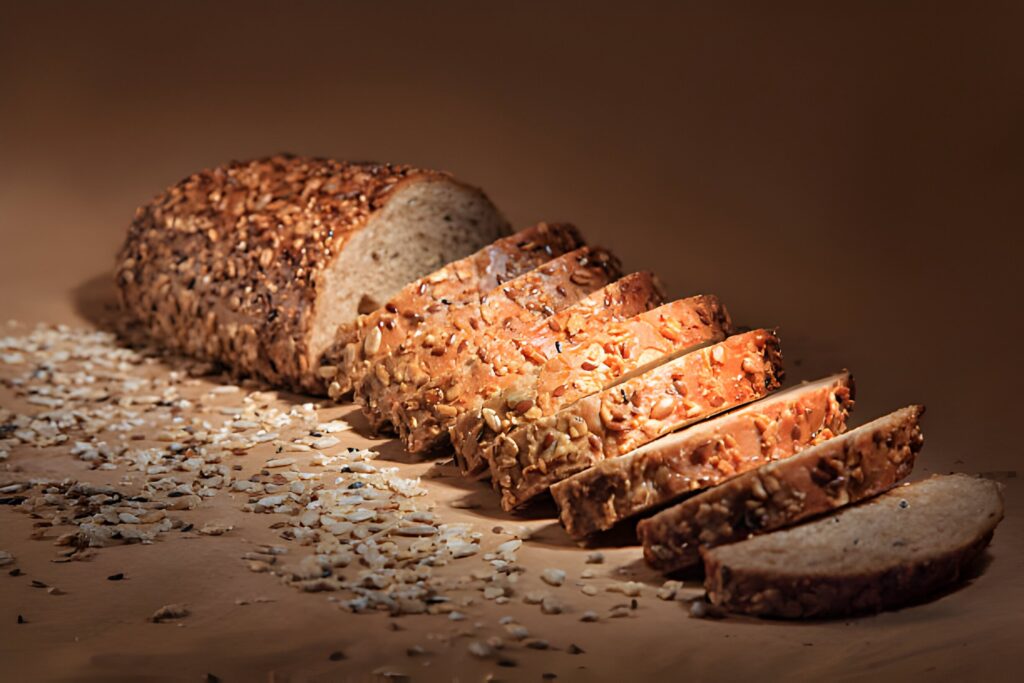Grain bread is a versatile option for dietary preferences and provides a more complex flavor profile than white bread. Its rich texture and the inclusion of various seeds and nuts make it a favorite among those who enjoy a hearty slice of bread with their meals.
1. What is Grain Bread?
Grain bread is characterized by its composition of whole grains, seeds, and nuts, offering diverse nutritional elements. The most common grains in grain bread are wheat, oats, barley, and rye. These grains are combined with various seeds such as pumpkin, sunflower, flax seeds, and nuts like almonds and walnuts to create a unique and delicious bread with a nutty and crunchy texture.
In addition to the classic grains, some bakers like to experiment with less common grains such as spelled, millet, or quinoa to create unique flavor combinations. These grains not only enhance the taste but also contribute to the overall nutritional value of the bread.
2. Types of Grain Bread
Various types of grain bread are available on the market, each with its unique flavor and texture. Below, we delve into some of the most popular types of grain bread, helping you to understand the differences and what makes each special.
2.1 Whole Grain Bread

Whole grain bread is made from whole grains, meaning the entire grain is used, including the bran, germ, and endosperm. This bread is high in fiber, vitamins, and minerals, making it a healthy choice for those looking to improve their diet. The entire grain ensures that the bread is nutritious and has a denser, more satisfying texture than bread made from refined grains.
This type of bread can come in many forms, such as loaves, rolls, or even bagels, and can be found in artisanal bakeries and conventional grocery stores. It is also popular as a base for sandwiches because of its sturdy texture and ability to complement a wide range of flavors.
2.2 Honey Wheat Bread

Honey wheat bread presents a sweeter rendition of whole grain bread, replacing sugar with honey in its preparation. This bread is also made with whole grains, making it a nutritious and tasty option for those with a sweet tooth. The honey’s natural sweetness adds flavor and acts as a natural preservative, helping the bread stay fresh for longer.
Honey wheat bread is particularly popular among children and those new to grain bread, as the sweetness helps ease the transition from more traditional, sweeter bread.
2.3 Seed Loaf

A seed loaf is a bread packed with various seeds, such as pumpkin, sunflower, and flax seeds. It has a crunchy and nutty texture and is an excellent source of healthy fats, protein, and fiber. The seeds contribute to the nutritional profile, giving each bite flavor and texture.
Seed loaves are often recommended for people looking to increase their intake of omega-3 fatty acids, as many seeds, especially flaxseeds, are rich in these essential nutrients.
2.4 Multi-Grain Bread

Multi-grain bread is made with different grains, such as wheat, oats, and barley—an excellent option for those who want to incorporate a variety of grains into their diet. The combination of grains offers a complex flavor and a wide array of nutritional benefits, making it a favorite for health-conscious individuals.
This type of bread can sometimes include additional ingredients like brown rice, buckwheat, or cornmeal, further diversifying its taste and texture. Multi-grain bread is often a top choice for a hearty breakfast toast or a robust sandwich.
3. The Health Benefits of Grain Bread
Grain bread is not only delicious but also has numerous health benefits. Here are some of the reasons why you should consider incorporating grain bread into your diet:
3.1 High in Fiber
One of the main health benefits of grain bread is its high fiber content. Whole grains are an excellent source of fiber, which is essential for healthy digestion and can help lower cholesterol levels. Fiber also regulates blood sugar levels, benefiting people with diabetes or those at risk of developing the condition.
The fiber in grain bread can also contribute to a feeling of fullness, which helps to prevent overeating. This satiating effect is one reason grain bread can be a practical part of a weight management plan.
3.2 Rich in Nutrients
Grain bread is high in fiber and contains various essential nutrients, including vitamins, minerals, and healthy fats. These nutrients are necessary for overall health and can help prevent multiple diseases. For instance, B vitamins found in whole grains are crucial for energy metabolism and the proper functioning of the nervous system.
Moreover, the seeds and nuts are a source of antioxidants, which can combat oxidative stress and inflammation in the body. This can contribute to preventing chronic diseases such as certain types of cancer.
3.3 Lowers the Risk of Heart Disease
Studies have shown that consuming whole grains, such as those found in grain bread, can help lower the risk of heart disease. This is because whole grains contain antioxidants and anti-inflammatory compounds that can protect against heart disease. Additionally, the soluble fiber in whole grains can help reduce bad cholesterol (LDL) levels, which is a critical factor in heart health.
Including grain bread in your diet can also help maintain healthy blood pressure levels, reducing the risk of heart disease and stroke.
3.4 Helps with Weight Management
Because of its high fiber and nutrient content, grain bread can help you feel fuller for longer, making it an excellent option for those looking to manage their weight. It is also a healthier alternative to traditional white bread, which is high in refined carbohydrates and can lead to weight gain. Choosing grain bread over white bread can help reduce calorie intake while still providing the satisfaction of eating bread.
Furthermore, the complex carbohydrates provide a steady energy source, preventing the spikes and crashes in blood sugar that can lead to cravings and overeating.
4. How to Make Your Grain Bread
Baking your whole-grain bread at home is more than just economical. Still, it also allows you to manage the ingredients and guarantee that your bread is as nutritious as possible. Here is a simple recipe for a delicious honey wheat seed loaf:
4.1 Ingredients:

- 2 cups of whole wheat flour
- 1 cup of oats
- 1/2 cup of honey
- 1/4 cup of pumpkin seeds
- 1/4 cup of sunflower seeds
- 1/4 cup of flax seeds
- 1/4 cup of chopped almonds
- 1/4 cup of chopped walnuts
- 1/4 cup of water
- One packet of active dry yeast
- One teaspoon of salt
- One tablespoon of olive oil
4.2 Instructions:
- Combine whole wheat flour, oats, and salt in a large mixing bowl.
- Mix the yeast with warm water in a separate bowl and let it sit for 5 minutes until it becomes frothy.
- Add the yeast mixture, honey, and olive oil to the dry ingredients and mix until a dough forms.
- Knead the dough on a floured surface for 5 minutes, then place it in an oiled bowl and cover it with a damp cloth. Allow the mixture to ferment and expand for one hour.
- After the dough has risen, punch it down and add the seeds and nuts. Continue kneading the dough for an extra 5 minutes.
- Form the dough into a loaf shape and carefully position it in a greased pan. Place a damp cloth over the dough and allow it to rise for 30 minutes.
- Preheat the oven to 375°F (190°C).
- Bake the bread for 30 to 35 minutes or until the crust becomes golden brown.
- Allow it to cool for approximately 5 minutes before slicing and serving.
Homemade grain bread fills your home with a delightful aroma and provides the satisfaction of creating something wholesome and tasty with your hands. Experimenting with different grains, seeds, and nuts can lead to various flavors and textures, so feel free to customize the recipe to suit your taste preferences.
5. Where to Buy?
Ever Fresh Natural Foods is an online platform that offers a variety of natural and organic food products. They provide a range of options, including nuts, seeds, dried fruits, grains, and other health-oriented snacks. The website seems to focus on providing high-quality, natural ingredients for individuals looking to maintain a healthy lifestyle. Additionally, they may offer information about the nutritional benefits of their products and tips for incorporating them into a balanced diet.
6. Conclusion
Grain bread is a delicious and nutritious alternative to traditional wheat bread. It’s a great addition to any diet, packed with essential nutrients and high fiber, and beneficial for heart health and weight management. By making at home, you can ensure that you use high-quality ingredients and enjoy the satisfaction of baking your bread. We encourage you to experience it firsthand and discern the notable distinction in flavor.
Whether enjoyed as a hearty sandwich base, a flavorful toast for breakfast, or simply as a snack with your favorite spread, it is versatile and can be tailored to your dietary needs. Commence your baking journey today and embrace the wholesome goodness of whole-grain bread!
Explore the most recent articles on healthy diets by clicking here.

